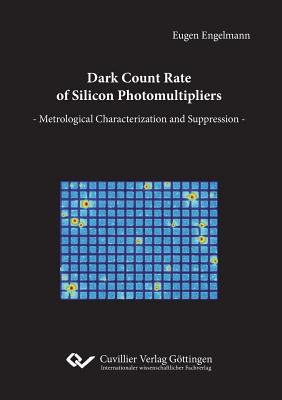
- We will send in 10–14 business days.
- Author: Eugen Engelmann
- Publisher: Cuvillier
- Year: 2018
- Pages: 194
- ISBN-10: 3736998929
- ISBN-13: 9783736998926
- Format: 14.8 x 21 x 1 cm, softcover
- Language: English
- SAVE -10% with code: EXTRA
Reviews
Description
In recent years, Silicon Photomultipliers (SiPMs) developed into mature photon detectors which are chosen in a wide field of applications. However, the dark count rate (DCR) of SiPMs sets strong limitations to such detector systems. This quantity describes the rate at which pulses are generated in the absence of light (dark pulses) and deteriorate the photon counting performance of SiPMs. In the course of the presented research, two innovative characterization methods were developed for the identification and evaluation of the physical effects which underlie the generation of dark pulses in SiPMs. The first method is based on the temperature dependence of the DCR. It allows for the extraction of different contributions to the dark count rate, which (a) depend on the applied voltage, (b) depend on the applied overvoltage and (c) are quasi-independent of the electric field. The second method is based on the detection and mapping of the light intensity which is emitted by the effect of hot carrier luminescence during the avalanche breakdowns of SiPM micro-cells. This method enables a sub-micro-cell, 2D spatially resolved measurement of the dark count rate within the plane of the active area. In particular, the individual contributions of implantation and radiation induced defects to the DCR were evaluated via this method. The acquired knowledge was used to successfully suppress the dark count rate of KETEK SiPMs down to a level of 40 kHz/mm².
EXTRA 10 % discount with code: EXTRA
The promotion ends in 20d.15:31:27
The discount code is valid when purchasing from 10 €. Discounts do not stack.
- Author: Eugen Engelmann
- Publisher: Cuvillier
- Year: 2018
- Pages: 194
- ISBN-10: 3736998929
- ISBN-13: 9783736998926
- Format: 14.8 x 21 x 1 cm, softcover
- Language: English English
In recent years, Silicon Photomultipliers (SiPMs) developed into mature photon detectors which are chosen in a wide field of applications. However, the dark count rate (DCR) of SiPMs sets strong limitations to such detector systems. This quantity describes the rate at which pulses are generated in the absence of light (dark pulses) and deteriorate the photon counting performance of SiPMs. In the course of the presented research, two innovative characterization methods were developed for the identification and evaluation of the physical effects which underlie the generation of dark pulses in SiPMs. The first method is based on the temperature dependence of the DCR. It allows for the extraction of different contributions to the dark count rate, which (a) depend on the applied voltage, (b) depend on the applied overvoltage and (c) are quasi-independent of the electric field. The second method is based on the detection and mapping of the light intensity which is emitted by the effect of hot carrier luminescence during the avalanche breakdowns of SiPM micro-cells. This method enables a sub-micro-cell, 2D spatially resolved measurement of the dark count rate within the plane of the active area. In particular, the individual contributions of implantation and radiation induced defects to the DCR were evaluated via this method. The acquired knowledge was used to successfully suppress the dark count rate of KETEK SiPMs down to a level of 40 kHz/mm².


Reviews